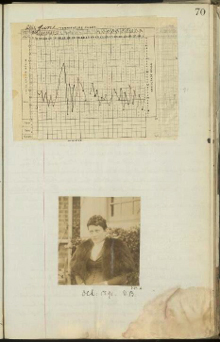Medical Histories in Photography and Film
Tuesday, February 21, 2017| Clephan Building, room CL 2.30, 4-6pm
Open to all – just turn up!
 Dr Katherine Rawling (Associate Fellow, CHM, University of Warwick)
Dr Katherine Rawling (Associate Fellow, CHM, University of Warwick)
The figure of the doctor-photographer is a crucial actor in the production of many medical or psychiatric patient photographs. Frequently with one foot in each of the camps of science and art, the doctor-photographer responded to the concerns of both spheres of discourse in her or his practices. In this paper I wish to investigate a selection of photographers who were also psychiatric doctors, in an attempt to unpick their dual roles and consider how they negotiated or approached this highly ambiguous and complicated task of photographing their patients. How did practitioners reconcile these roles, or did they feel they needed to? What happens to a photograph when it is taken by a doctor? Is the act of photographing approached in a different way? What is the effect on the subject/sitter/patient? Do doctors produce different photographs compared to non-medical photographers? Are their photographs then viewed differently?
As a representation of the doctor-patient encounter, psychiatric patient photographs offer an opportunity to consider issues of control, authority, consent, complicity, resistance, intimacy, agency, the production and communication of knowledge, and professionalization and identity formation. Each photograph produced by a doctor is a visualisation of the relationship between a patient and their practitioner but, also, that between a subject or sitter and their photographer. The images are therefore ambiguous and fluid, with multiple meanings and uses.
In case of queries contact Dr Beatriz Pichel beatriz.pichel@dmu.ac.uk
